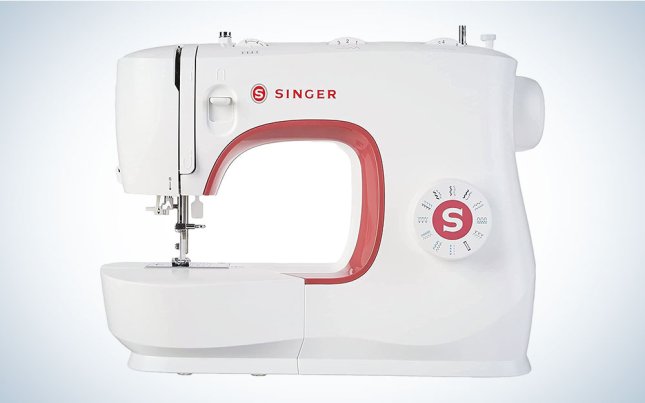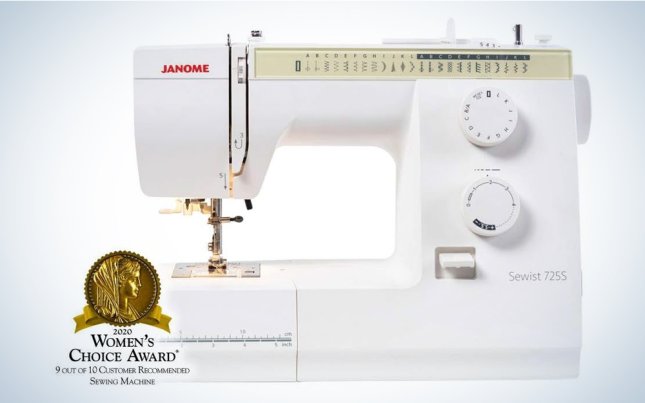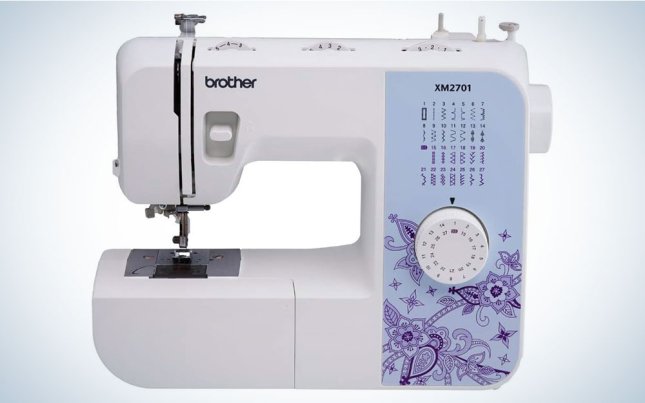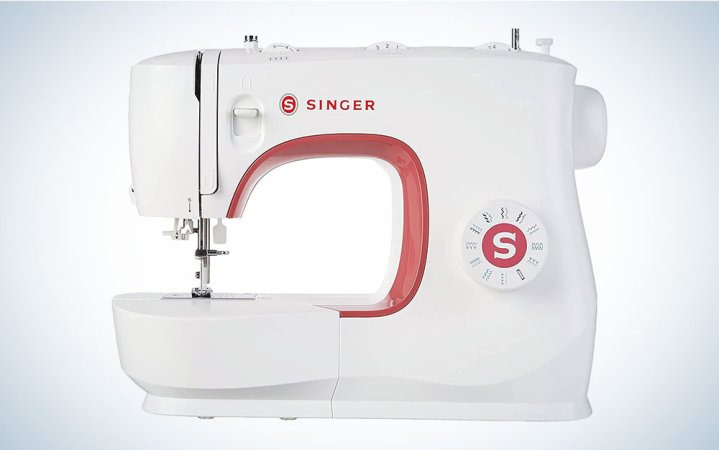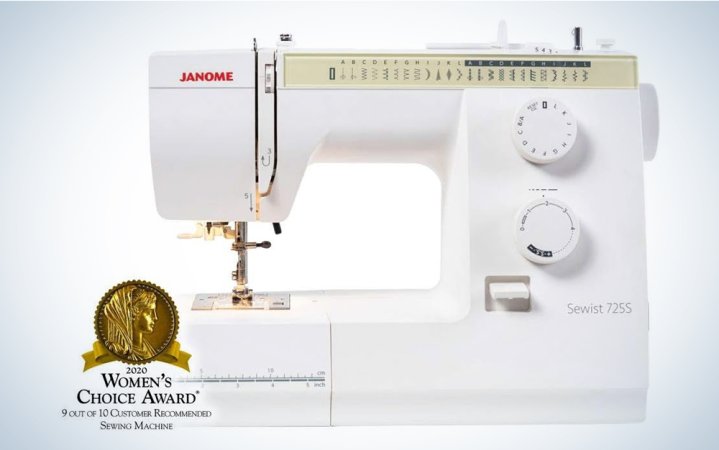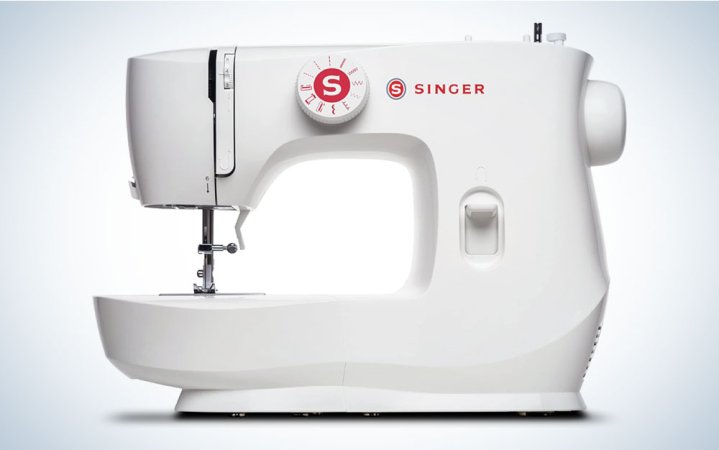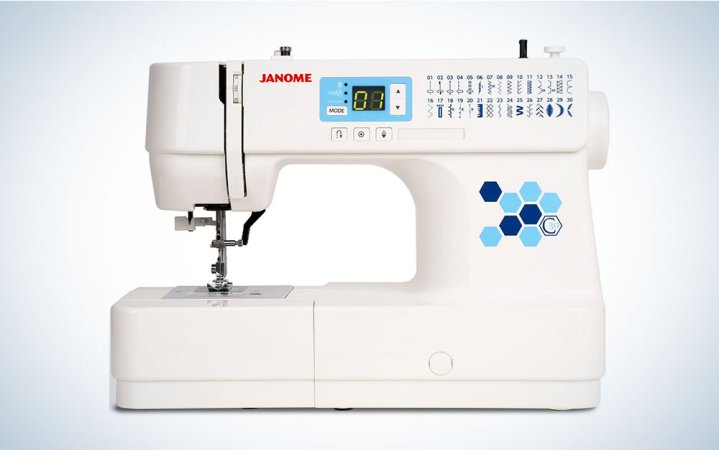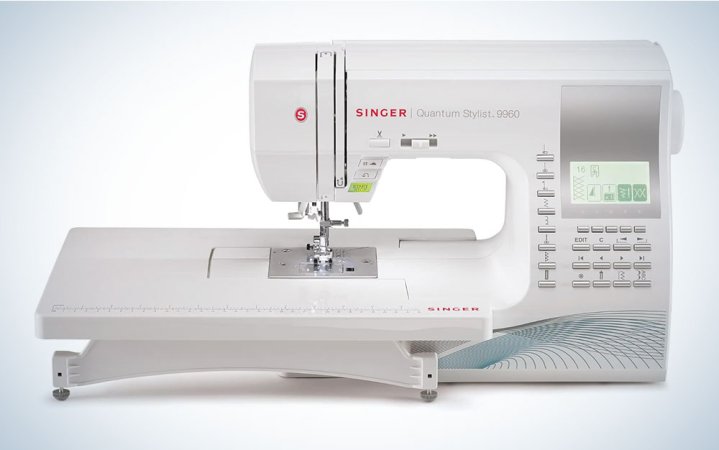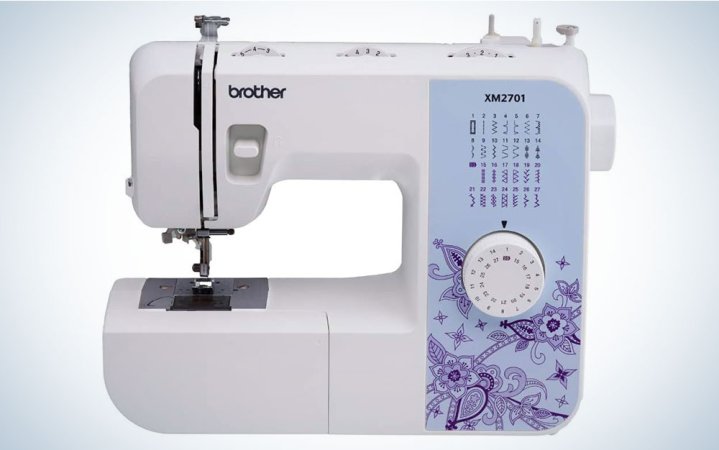We may earn revenue from the products available on this page and participate in affiliate programs. Learn more ›
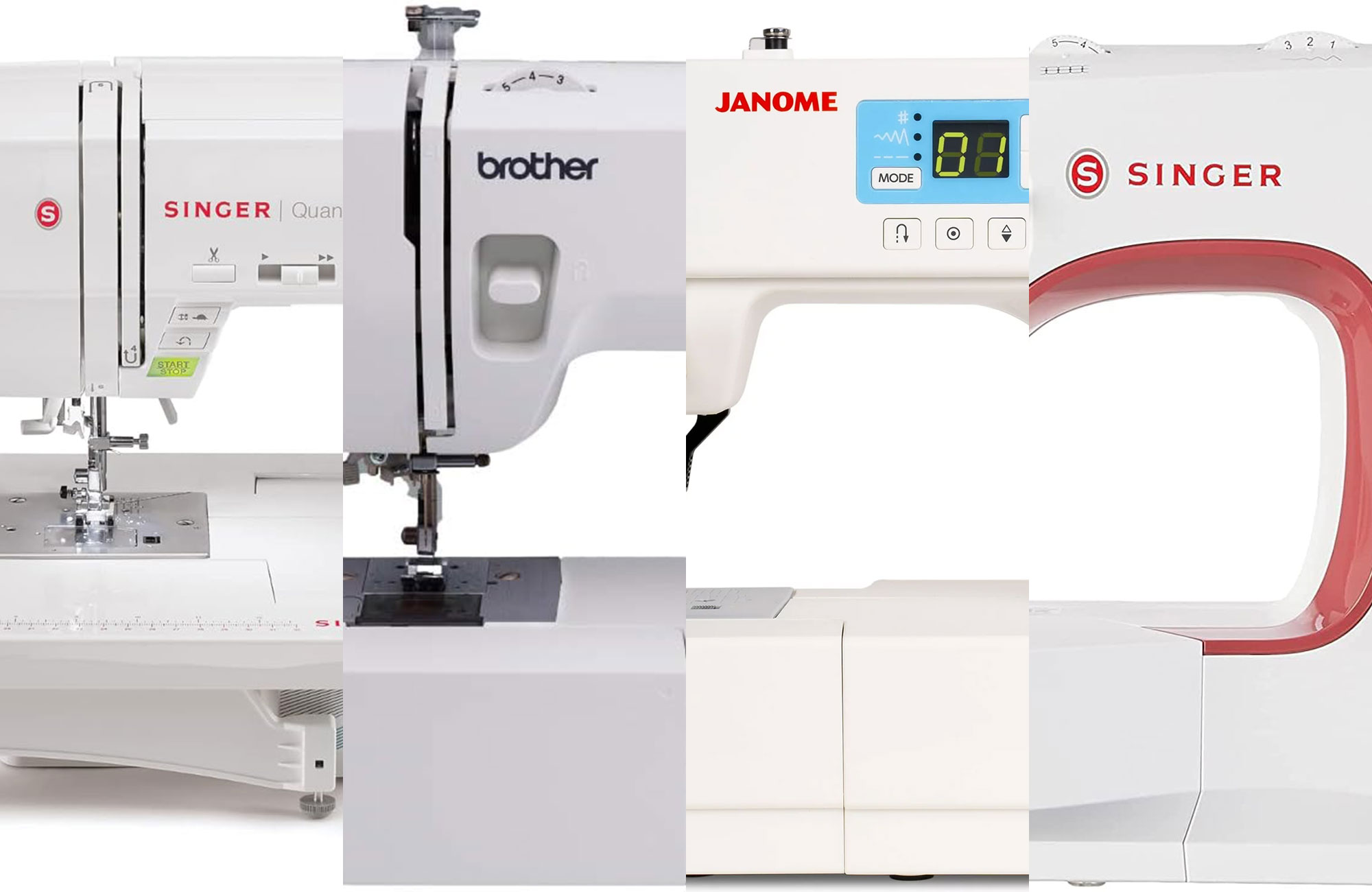
Kudos to you for deciding that you’ll learn how to sew and taking your first step toward picking from the wide range of sewing machines for beginners. It’s a creative hobby that millions of people engage in. Once you learn how to sew, you’ll be able to make fashionable and utilitarian items, including apparel, accessories, craft projects, and home decor pieces. One of the first steps is to acquire a machine that offers ease of operation and maintenance while assisting you in turning out successful sewing projects, even as a beginner. We’ve done the work to delineate an array of excellent choices, giving you a headstart on selecting one of the best sewing machines for beginners.
- Best overall: Singer MX 231 Sewing Machine
- Best high-end: Janome Sewist 725S with VIP package
- Best for kids and teens: Singer MX60 Sewing Machine
- Best computerized: Janome C30 Sewing Machine
- Best for beginner quilters: Singer 9960 Sewing and Quilting Machine
- Best budget: Brother XM2701 Sewing Machine
How we chose the best sewing machines for beginners
Our preparation for this buyers’ guide is based on personal sewing experience and research into the attributes that make a sewing machine suitable for beginners. We began by reading 10 articles written by sewing experts regarding the top choices. Then, we read the product information for 18 likely machine options and narrowed our picks to six models that suit the varying needs of beginning sewists. We researched the product descriptions and specifications included on the manufacturers’ websites and the information retailers provide. And we spent hands-on time with as many models as possible. Recognizing that not all beginners have the same requirements and goals, we endeavored to select an array of beginner-appropriate machines to satisfy varying budgets and purposes.
The best sewing machines for beginners: Reviews & Recommendations
We’ve assembled a list of recommendations for sewing machines that will meet the needs of beginners while providing room for growth in sewing expertise. The machines featured here offer durability, versatility, and ease of use.
Best overall: SINGER MX 231 Sewing Machine
Pros
- Built-in needle threader
- One-step buttonhole maker
- Adjustable presser foot
- 97 stitch applications
- SINGER Sewing Assistant App provides 24/7 help
Cons
- Not a heavy-duty machine for extra-thick fabrics
Why it made the cut: The SINGER MX 231 offers ease of use along with versatility to provide beginners with successful outcomes on their sewing projects.
Specs
- Weight: 11.79 pounds
- Dimensions: 15.16 x 7.35 x 10.9 inches
- Number of built-in stitches: 23
As a beginner sewing enthusiast, you’ll want a simple machine yet sophisticated enough to give you pleasing results on your projects. With clearly marked options for stitch adjustments, as well as suitability for use on a wide array of fabrics, the SINGER MX231 mechanical sewing machine is ideal for starting out on your new hobby.
Several features of this machine will save you time and effort. Using the built-in needle threader, you’re ready to sew in seconds. Then, you can choose from 23 built-in stitches that produce 97 stitch applications. For added customization, the stitch lengths and widths are adjustable. Use this machine for a variety of sewing projects, as the presser foot adjusts to accommodate thick or thin fabrics. When you’re ready to add buttons to a project, the one-step buttonhole maker is a handy, time-saving feature.
As a beginner, you’ll want the necessary components to get started. The MX 231 package contains a foot pedal with an electrical cord, bobbins, needles, a thread spool cap, and a darning plate. Additionally, the machine includes three interchangeable presser feet, including a general-purpose foot, a buttonhole foot, and a button sewing foot.
Best high-end: Janome Sewist 725S with VIP package
Pros
- Snap-on presser feet with high foot lift for thick fabrics
- Built-in needle threader
- Jam-proof bobbin system
- 1-step buttonhole maker
- Hardcover for storage and portability
Cons
- Somewhat expensive
Why it made the cut: The Janome Sewist 725S, along with the VIP Package of accessories and interchangeable components, sets you up for sewing success right from the start.
Specs
- Weight: 14.8 pounds
- Dimensions: 16 x 11.9 x 7 inches
- Number of built-in stitches: 23
If your finances allow a more high-end purchase, the Janome Sewist 725S offers simple and straightforward operation for beginners combined with ample features for growing your craft. It’s a mechanical machine with well-marked and conveniently located levers and dials to adjust multiple machine functions for enjoyable sewing.
Select from among 23 built-in stitches, and then fine-tune the stitch length and width with the turn of a dial. An additional dial allows you to adjust the tension and the presser-foot pressure to ensure smooth sewing with various types of fabric. With free-arm capability, you can sew hard-to-reach areas like cuffs and sleeves. Additionally, a drop-feed system facilitates the type of free-motion sewing necessary for quilting. The see-through bobbin cover shows your bobbin thread and the jam-proof system keeps the bobbin from becoming snarled.
The VIP package includes a hard cover to protect the machine for transport and storage. Additionally, the package contains an assortment of needles, bobbins, large and small spool holders, a quilt guide, a seam ripper, a screwdriver, and more. The pack of six included presser feet includes a seam foot, zigzag foot, overedge foot, zipper foot, blind hem foot, and automatic buttonhole foot.
Best for kids and teens: SINGER MX60 Sewing Machine
Pros
- 57 stitch applications
- Simple, easy to operate
- Pre-set stitch lengths and widths
- 4-step buttonhole maker
Cons
- Does not feature an automatic needle threader
- Does not feature a one-step buttonhole function
Why it made the cut: Tweens and teens just learning to sew can operate the SINGER MX60 mechanical machine to produce rewarding outcomes on their creative projects.
Specs
- Weight: 12.12 pounds
- Dimensions: 14.57 x 7.12 x 13.6 inches
- Number of built-in stitches: 6
Many sewing enthusiasts trace their roots in the craft back to their childhood and teenage years. When kids are learning to use a sewing machine, it’s best to keep the operating procedures basic and simple, and that’s exactly what the SINGER MX60 does. In fact, we chose this model as the best budget option in our roundup of SINGER sewing machines.
Start by threading the machine, following the guidelines that are clearly marked on the machine’s surface. Then, turn a prominent dial to select your desired stitch pattern. The six built-in stitches produce 57 stitch applications, ranging from straight seams to decorative stitches and buttonholes. Lengths and widths of the stitches are pre-set, so there’s no guesswork. However, beginners can fine-tune the thread tension to produce smooth lines of stitching on various types of fabrics. A four-step buttonhole function yields consistent results every time.
This machine is simple enough to make maintenance tasks easy. Although it’s lightweight and portable, the inner frame is fabricated from sturdy metal. It remains stationary on your work surface to prevent stitch skipping. Complementary accessories include an all-purpose foot, a buttonhole foot, a zipper foot, bobbins, needles, and a seam ripper.
Best computerized: Janome C30 Sewing Machine
Pros
- One-step buttonhole maker
- Jam-proof, drop-in bobbin
- LCD display is easy to read
- Lightweight and portable
- Strong, aluminum inner frame
Cons
- Not as easy to maintain as a mechanical machine
- Extensive options may be confusing for beginners
Why it made the cut: If you’re comfortable with technology, you might want a computerized machine like the Janome C30 for your beginner sewing experiences.
Specs
- Weight: 10.4 pounds
- Dimensions: 15 x 6.4 x 11 Inches
- Number of built-in stitches: 30
Many sewing experts advise beginners to start on mechanical sewing machines. They are more straightforward to operate as well as easier to maintain. However, some new sewing hobbyists like a computerized machine’s versatility and wide-ranging creative possibilities. The Janome C30 computerized sewing machine is a good choice for beginners who enjoy technology. An array of included presser feet and accessories facilitates your success right out of the box.
Choose from among 30 built-in stitches with numbers that appear brightly on the LCD screen. You can thread this machine with one hand and let the automatic needle threader handle the hard part. The bobbin drops in from the top and features a clear cover to monitor your thread. Additionally, the bobbin system is jam-proof to prevent frustrating snags.
With the C30, you’ll find push-button ease of operation at your fingertips—the locking-stitch button ties off the end of your thread. Then, you can hit the reverse button to reinforce the seam. A needle up/down button instantly positions your needle for pivoting the fabric. The drop feed mechanism lowers the feed dogs to allow free-motion sewing, and the storage compartment detaches to allow free-arm sewing of sleeves, cuffs, and pants legs.
Best for beginner quilters: SINGER 9960 Sewing and Quilting Machine
Pros
- Computerized with LCD display screen
- 13 one-step buttonhole styles
- Large selection of stitches, including alphanumeric fonts
- Automatic needle threader
- Top drop-in bobbin
Cons
- Heavier than many other sewing machines
- May be overly complex for some beginners
Why it made the cut: If you’re learning to sew to make quilts, the SINGER Quantum Stylist 9960 will aid you in developing the necessary skills.
Specs
- Weight: 20 pounds
- Dimensions: 17.25 x 8.25 x 12 inches
- Number of built-in stitches: 600
Most beginners start with a simple, mechanical sewing machine. But if you have your heart set on quilt-making, you might want to start with a machine to help you realize that dream. The SINGER Quantum Stylist 9960 combines ease of use and multiple computerized features for quilting artistry and routine sewing and crafting projects. In fact, we featured it as the best overall choice in our roundup of sewing machines for quilting.
This machine offers 600 built-in stitches that produce 1,172 stitch applications, including lettering for monograms. The built-in stitches include five alphanumeric fonts and 13 versions of one-step buttonholes. With the touch of a button, you can choose decorative as well as straight stitches that present possibilities for sewing on a wide range of fabrics, including stretchy types.
A top drop-in bobbin is easy to monitor, and the automatic needle threader saves time and eye strain. This machine will sew at a maximum speed of 850 stitches per minute so that you can turn out projects quickly. The accompanying accessories include 13 different presser feet to accomplish a wide array of sewing tasks ranging from quilting to embroidery and button sewing.
Best budget: Brother XM2701 Sewing Machine
Pros
- Budget-friendly price
- Clearly marked stitch selection dial
- 63 stitch applications
- Drop-in bobbin
- Automatic needle threader
Cons
- Plastic construction
- Not for extra-thick, heavy fabrics
Why it made the cut: While you’re a beginner, it’s wise to invest frugally in a straightforward and reliable piece of equipment like the Brother XM2701 mechanical sewing machine.
Specs
- Weight: 12.6 pounds
- Dimensions: 12.1 x 5.9 x 15.3 inches
- Number of built-in stitches: 27
In our roundup of Brother sewing machines, we selected the XM2701 as best overall. If you’re just getting started in sewing, you may want a reasonably priced machine that offers user-friendly operating procedures. The Brother XM2701 features a clearly marked dial on the front, showing the 27 built-in stitch choices for various decorative and utilitarian sewing needs. With these available stitches, the machine produces 63 stitch applications.
Additionally, there’s an automatic threader that saves time and eliminates eye strain as you thread the needle. For added convenience, the drop-in bobbin is easy to see, and its jam-resistant functioning prevents frustrating snags and snarled threads. The automatic bobbin winding system lets you get to work quickly without wasting time on a tedious set-up task.
The work area on this machine is well-lit with an LED bulb. To increase its versatility, you can add the detachable free arm for hemming pants, sewing sleeves, and other in-the-round projects. The package includes six interchangeable feet to facilitate numerous sewing tasks. These include a narrow hemmer, a zigzag foot, a zipper foot, a blind stitch foot, a buttonhole maker, and a button sewing foot.
What to consider when buying the best sewing machines for beginners
As a beginning sewist, you’ll want to start with a machine that is simple enough to operate conveniently without confusion or frustration. On the other hand, you don’t want to outgrow your machine in a short period of time. As a result, you might consider a sewing machine that offers enough advanced features to provide room for growth as you take on expanded projects.
Portability, size, and storage
Now that you’re starting a sewing hobby, you’ll want to consider where you’ll use the machine and how you’ll store it. The weight will be an important factor if you need to move the machine every time you use it. The average weight of a sewing machine ranges from 10 pounds to 20 pounds. You’ll need a soft or hardcover to store the machine and keep it dust-free. A hard-sided cover is best for protecting the machine from damage.
Built-in stitches and automated functions
The built-in stitches in sewing machines range from straight seams to decorative zig-zags and buttonholes. Each machine offers a number of built-in stitches that may be modified in length and width to produce an even larger number of stitch applications. Special features like an automatic needle threader and a one-step buttonhole function save time and effort to make sewing more pleasurable.
Presser feet and other accessories
As you shop for a sewing machine, take note of the included components and accessories. Machines with multiple stitch functions will include various presser feet for specific actions like making buttonholes or attaching zippers. Additionally, you’ll need the necessary tools for your new hobby, including bobbins, needles, a seam ripper, and more.
FAQs
Look for a machine that offers basic, straightforward operating procedures and easy maintenance steps. On the other hand, you want enough advanced functions to make sewing pleasurable and to produce attractive results on your projects.
Both companies enjoy excellent reputations, with more than 100 years of experience in the sewing machine business. SINGER is reputed to be more solidly constructed, durable, and long-lasting than Brother.
You can learn how to sew from a friend or family member or take an in-person sewing class. Online learning options include sewing classes, YouTube videos, and self-paced tutorials.
Mechanical machines are more DIY-friendly than computerized models. Pay attention to dusting, lint removal, cleaning, oiling, and lubricating. You should perform these tasks on a regular schedule.
Get started with a simple project requiring straight seams and not including buttons or zippers. A square or rectangular pillow cover is a great first project.
Final thoughts on the best sewing machines for beginners
- Best overall: Singer MX 231 Sewing Machine
- Best high-end: Janome Sewist 725S with VIP package
- Best for kids and teens: Singer MX60 Sewing Machine
- Best computerized: Janome C30 Sewing Machine
- Best for beginner quilters: Singer 9960 Sewing and Quilting Machine
- Best budget: Brother XM2701 Sewing Machine
To meet the needs of beginning sewists, the SINGER MX231 sewing machine offers easy-to-use functions along with durable construction and simple maintenance requirements. Additionally, it provides enough advanced features to satisfy beginners who are expanding their skills in sewing.
